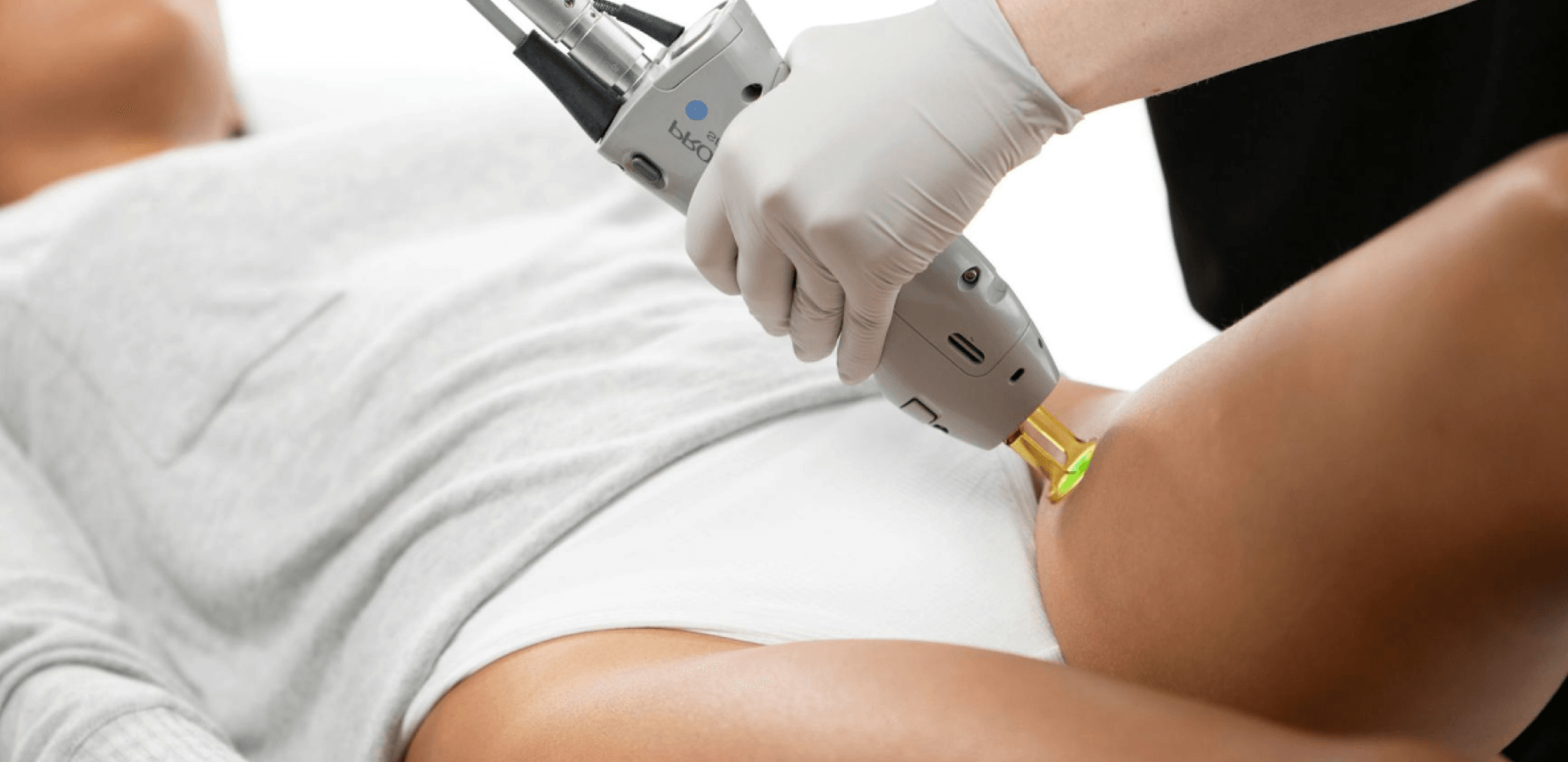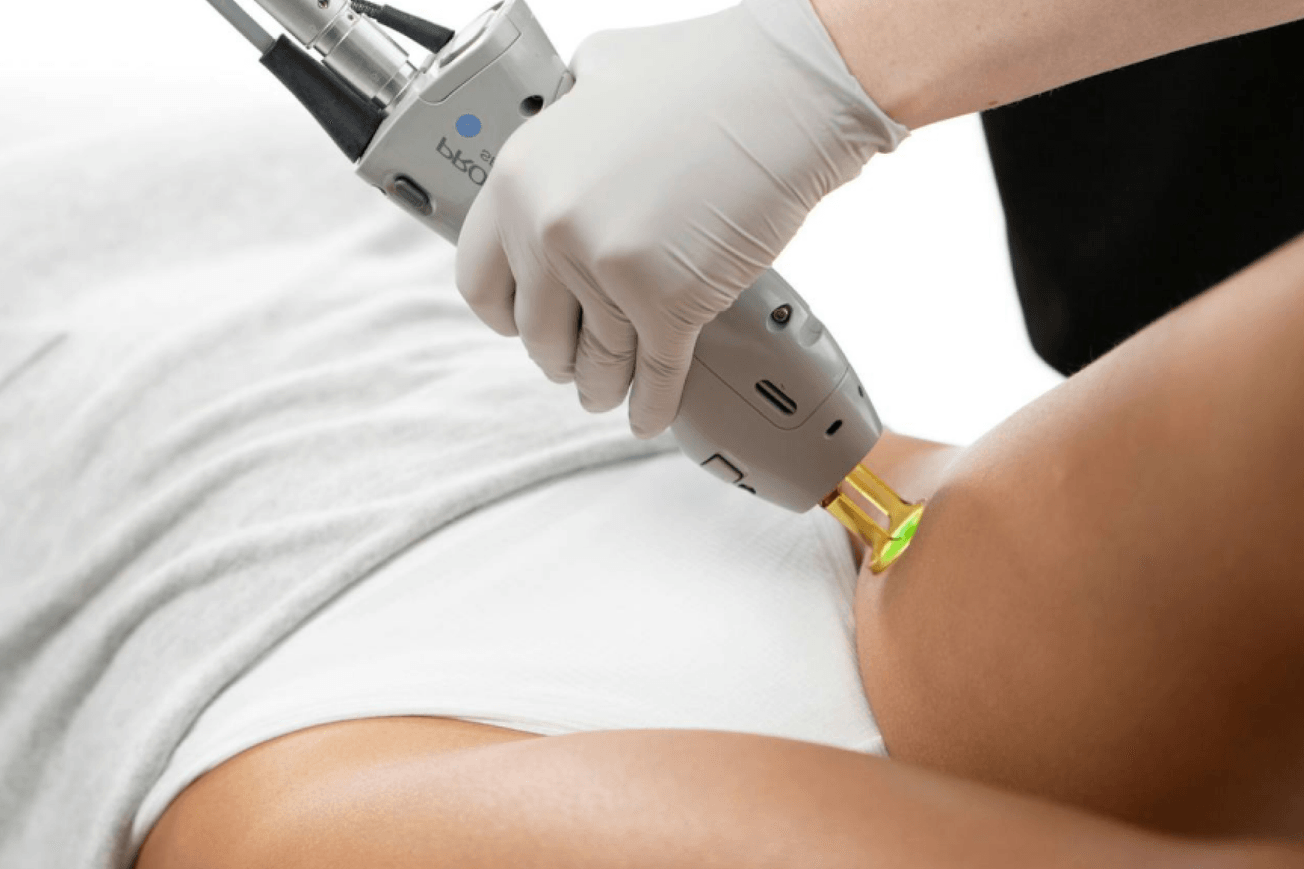

laser hair removal 101
Learn more about Laser Hair Removal including what it is, how it works, benefits, FAQs, and more from the experts at Ideal Image today!
What is laser hair removal?
Laser Hair Removal is a state-of-the-art cosmetic treatment that uses concentrated laser light to zap hair at the root. By targeting the pigment in the hair, the laser‘s energy is absorbed and converted into heat which damages the hair follicle — ultimately preventing future regrowth. Laser Hair Removal is the most trusted and effective method for eliminating unwanted hair, with a long history that has led to the safe, precise and comfortable technology loved by clients today.
how laser hair removal works
Target Melanin
The laser equipment emits a concentrated beam of light that is absorbed by the melanin (pigment) in the hair. This is why the treatment is often more effective on darker hairs, which have higher melanin content.
Heat Generation
As the melanin absorbs the light, it generates heat. This heat travels down to the root of the hair and damages the hair follicle, which is responsible for hair growth.
Neutralize Follicle
The damaged hair follicle then loses its ability to regrow hair. If the hair does come back, it’s often finer in texture and lighter in color.
Repeat – Multiple Sessions
Hair grows in different cycles, so multiple sessions are required to target all hair follicles in the active growth phase. Over time, these sessions will remove the darker hair follicles and reduce the density and coarseness of lighter brown hair colors.

why choose ideal
At Ideal Image, we have over 20 years of experience in the Laser Hair Removal industry. Start your journey towards smooth, hair-free skin and experience the Ideal difference that sets us apart from everyone else.
what‘s right for you
laser vs. other methods
While traditional hair removal methods offer temporary relief, they often require constant upkeep and can lead to skin irritations. Laser Hair Removal provides a more permanent solution, drastically reducing hair regrowth and giving you the gift of smoother, more radiant skin.
Understanding the difference between Laser Hair Removal and other hair reduction methods is a must to make an informed decision about your aesthetic journey. Let‘s compare:
expectations & prep
Typical Results Timeline
Results can vary based on individual hair growth cycles, but most clients notice a reduction in hair growth after the first few treatments. Significant results are typically seen after a series of sessions spaced 6-10 weeks apart.
Sessions Commonly Needed
The number of sessions can depend on various factors, including the treatment area, hair density, and hair growth cycle. On average, our clients achieve their desired results in 6 to 8 sessions.
Maintaining Results Over Time
Here’s how to maintain your smooth results:
Follow-Up Treatments: Occasional touch-up sessions can help manage any new growth due to hormonal changes or natural hair cycle progression.
Sun Protection: Continuous sun protection can help maintain the quality of the skin and prevent changes in hair growth patterns.
Healthy Lifestyle: Maintaining a stable weight and balanced hormones can help prolong results.
Proper preparation for Laser Hair Removal enhances the treatment’s effectiveness and minimizes potential side effects. Here’s a comprehensive list of do’s and don’ts to guide you through the preparation process.
Do’s
Do Wear Loose Clothing
Opt for loose, comfortable clothing on the day of your treatment. This helps to avoid irritation in the treated area post-treatment.
Do Keep the Area Clean
Ensure that the area to be treated is clean and free from cosmetics, lotions, and deodorants before your session.
Do Follow Specific Instructions
Adhere to personalized advice and instructions from your Medical Professional based on your skin type and treatment area.
Don’ts
Don’t Engage in High-Intensity Workouts
Avoid vigorous exercise for 24 – 48 hours aftertreatment, as sweat can irritate the skin.
Don’t Consume Excessive Alcohol
Avoid drinking alcohol 24-48 hours before your treatment, as it can increase sensitivity and inflammation.
Avoid Sun Exposure
Stay out of the sun including tanning beds and self-tanning creams or sprays.
Don’t Forget to Ask Questions
Don’t hesitate to ask your medical professional if you’re uncertain about any aspect of the pre-treatment process.
Following these do’s or don’ts will help ensure a safer, more effective Laser Hair Removal experience and can lead to better overall results. Remember, how well you prepare for the treatment is the key to successful Laser Hair Removal.
Pre-treatment care is an integral part of the Laser Hair Removal process. Proper care and preparation can significantly enhance the effectiveness of the treatment, reduce the risk of side effects, and ensure a smoother, more comfortable experience. The laser targets the pigment in the hair follicle, and pre-treatment care helps make this process as efficient as possible. It is also crucial for safeguarding your skin during and after the treatment.
4-6 Weeks Before Treatment
- Avoid Sun Exposure: Keep the treatment area protected from the sun. Tanned or sunburned skin can lead to complications with Laser Hair Removal. Use a broad-spectrum SPF 30 or higher when going outdoors.
- No Fake Tan Products: Avoid using fake tan products or tanning beds for at least 4 weeks before your appointment, as the laser will not be able to distinguish between sun tanned skin or skin that is tanned through non-sun methods. Either can lead to complications with Laser Hair Removal.
- Avoid Plucking and Waxing: Refrain from any hair removal methods that remove the hair from the root, like plucking, waxing, or using depilatory creams. The laser targets the roots, so the root needs to be present for the treatments to be effective.
2 Weeks Before Treatment
- Skin Care Products: Avoid using products containing retinol or glycolic acid in the treatment area, as these can make the skin more sensitive.
- Medications: Inform your medical professional about any medications you are taking, as some can affect your treatment or make your skin more sensitive to the laser.
48-72 Hours Before Treatment
- Shave the Area: Discontinue shaving the treatment area 24-48 hours before your session. This minimizes the risk of burning the hair above the skin’s surface and allows the laser to focus on the hair follicles underneath the skin.
24 Hours Before Treatment
- Avoid Irritants: Avoid products that irritate the skin, such as harsh exfoliants or alcohol-based toners.
- Hydrate: Drink plenty of water to keep your skin hydrated and healthy.
- Moisturize: Keep the skin moisturized leading up to the treatment. Hydrated skin can recover more quickly post-treatment.
- Gentle Cleansers: Switch to a gentle, non-abrasive cleanser to avoid skin irritation.
Adhering to these pre-treatment guidelines, helps ensure your Laser Hair Removal session at Ideal Image is as effective and comfortable as possible. Remember, the key to successful hair removal is not just the treatment itself but also how well you prepare your skin beforehand.
Laser Hair Removal is a safe and commonly performed treatment. However, as with any medical treatment, there are potential side effects, which are typically minor and temporary. These may include:
Redness and Swelling
Comparable to mild sunburn, these are the most common side effects and usually subside within a few hours to several days after treatment.
Discomfort
Any pain is usually mild and can be treated with over-the-counter pain relief or cold compresses.
Pigment Changes
The treated area may lighten or darken following treatment, though this is typically temporary, especially with proper sun protection.
Managing Side Effects
Cooling the Area
Applying ice packs immediately after treatment can help reduce swelling and discomfort.
Gentle Skincare
Use mild soap and moisturizers on the treated area and avoid harsh or abrasive treatments.
Sun Avoidance
Protect the treated area from the sun with clothing and use sunscreen with at least SPF 30 protection.
You should contact your clinic to speak to a medical professional if you experience:
Signs of Infection
Such as increasing pain, swelling, or pus, which are not typical side effects.
Blistering or Scarring
Though rare, these require medical attention.
Persistent Changes in Pigment
If the skin does not return to normal after several weeks
Histamine Reaction
We would also want to be made aware of a histamine reaction so we can advise on appropriate care. Symptoms may include:
- Itchiness (Urticaria)
- Red bumps on the treatment area (hives)
- Blisters (may or may not be present)
At Ideal Image, your safety and well-being are our top priorities. Our medical professionals are available to address any concerns you may have following your treatment.
safety & efficacy
Your safety is our utmost priority. Laser Hair Removal is not only effective but also one of the safest cosmetic treatments when performed by trained professionals. At every Ideal Image location, our treatments are administered by highly skilled medical professionals, ranging from estheticians to registered nurses, nurse practitioners and physician assistants. Every one of our medical professionals undergoes significant specialized training followed by continuous on-going oversight, training and skill development, ensuring they are equipped with the latest techniques and best practices. Furthermore, every clinic is overseen and led by a dedicated medical director. Combined, their expertise ensures every treatment session is effective and meets the highest standards of safety.
results you can see & feel
Say goodbye to the endless cycle of temporary fixes.
Our Laser Hair Removal treatments offer permanent hair reduction, with most clients achieving significant hair loss after just a few sessions.
frequently asked questions
Remember, asking questions and discussing any concerns with a medical professional to ensure a safe and effective treatment experience is important. Their guidance will be tailored to your needs and circumstances, ensuring the best possible outcomes.
Laser Hair Removal is a cosmetic treatment that uses concentrated laser light energy to target and destroy hair follicles at the root, inhibiting future hair growth.
The laser targets the melanin (pigment) in the hair. When melanin absorbs the light, it generates heat, damaging the hair follicle and preventing or reducing future hair growth.
The level of discomfort varies from person to person and depends on the treated area. Many describe the sensation as a rubber band snapping against the skin. Most modern laser systems incorporate cooling mechanisms to minimize discomfort. Your Medical Professional can also provide advice on pain management, including the use of topical numbing creams if necessary.
The number of sessions required varies depending on the individual’s hair type, color, skin type, and treatment area. Typically, 6-8 sessions are needed for significant hair reduction, possibly requiring additional maintenance sessions. Hair grows in cycles, and the laser is most effective at targeting hair in its active growth phase, so multiple sessions are necessary.
Laser Hair Removal offers longer-lasting results compared to waxing or shaving. While waxing and shaving remove hair at the surface, lasers target the hair follicle, reducing its ability to regrow hair.
Avoid sun exposure, tanning, and waxing for at least four weeks before treatment. Discontinue shaving the area to be treated 24-48 hours prior to your session.
Laser Hair Removal works best on dark hair and fair skin because the laser targets the melanin (pigment) in the hair. However, technological advances have made it increasingly effective in a broader range of hair types and skin tones. Your aesthetic consultant can assess your suitability for the treatment during your consultation.
Common side effects include redness, swelling, and mild discomfort, similar to sunburn. These typically resolve within a few hours to a few days. Rarely, more serious side effects like blistering, pigmentation changes, or scarring can occur. Following pre- and post-treatment care instructions and working with an experienced Medical Professional reduces these risks.
The duration of each session depends on the size of the area being treated. Small areas like the upper lip may take just a few minutes, while larger areas like the back or legs can take an hour or more.
Yes, when performed by a qualified and experienced Medical Professional, Laser Hair Removal is considered safe. It’s important to follow all pre- and post-treatment instructions and to communicate any concerns or medical conditions with your Medical Professional.
Laser Hair Removal typically results in a significant and long-lasting reduction of hair growth. Some people may require occasional maintenance treatments.
Yes, you can and should shave between Laser Hair Removal sessions. It’s the only recommended hair removal method during your treatments, as it doesn’t disturb the hair follicle.
Contact a Medical Professional at Ideal Image if you experience side effects beyond mild redness and swelling. In case of severe reactions, seek medical attention immediately.
Laser Hair Removal is not recommended during pregnancy, primarily due to the lack of research on its effects on the fetus. We will not treat if you are currently pregnant.
Avoid sun exposure and use sunscreen daily. Refrain from waxing or plucking hairs in the treated area. Your provider may also recommend a specific moisturizer. Additionally, it’s best to avoid strenuous exercise, hot baths, or saunas for 24-48 hours post-treatment.
Lasers can react with tattoo ink, causing skin damage or fading of the tattoo. We are unable to treat areas with tattoos.
Electrolysis treats each hair follicle individually, making it more time-consuming. Laser Hair Removal can treat multiple follicles at once, making it faster for larger areas.
At Ideal Image, treatments are administered by highly skilled and licensed medical professionals ensuring safety and efficacy.
Ideal Image uses the gold standard in Laser Hair Removal technology, including the Alexandrite Laser and Nd: YAG Laser.
Many clients notice a reduction in hair growth after the first session, but significant results typically become evident after 2-3 sessions. Typically, 6-8 sessions are required for significant hair reduction.
Yes, it’s an effective solution for ingrown hairs, reducing their occurrence by targeting the hair follicle.
While the upfront cost might seem higher than other methods, the long-term reduction in hair growth and reduced need for other hair removal products or services can make it a cost-effective choice in the long run.





